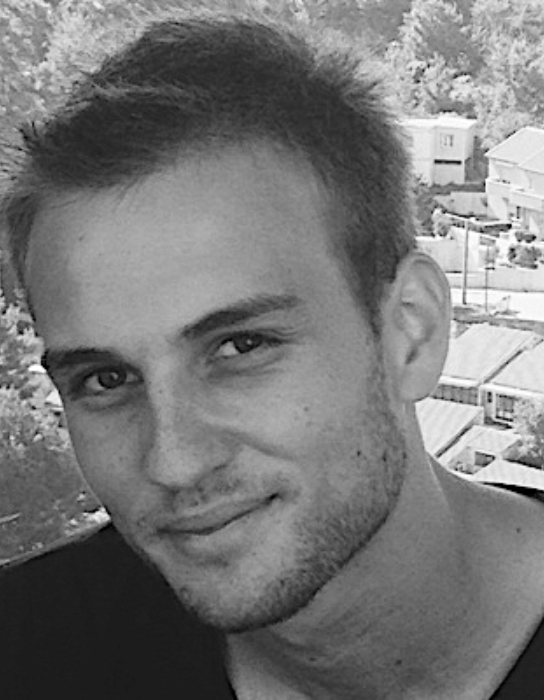Odjel za obradu signala uključuje znanstvena područja poput teorije signala i sustava, teorije i primjene kodiranja, uporabe filtara, prijenosa signala, estimacije, detekcije, analize, prepoznavanja, sinteze te reprodukcije signala digitalnim ili analognim uređajima i tehnikama. Pojam signala uključuje audio i video signale, govor, slike, komunikacije, signal sonara, radara kao i medicinske, glazbene i druge signale.
Odjel za obradu signala
Odjel za obradu signala Hrvatske sekcije IEEE, Hrvatska sekcija IEEE i Zavod za elektroničke sustave i obradbu informacija FER-a vas pozivaju na predavanja iz programa Distinguished Lecturer/Speaker Program
"Data-Driven Analysis and Fusion of Medical Imaging Data"
i
"ICA and IVA: Theory, Connections, and Applications"
Dr. Adali, Tülay (IEEE Signal Processing Society Distinguished Lecturer)
Predavanja će biti održana u ponedjeljak 17. rujna i u utorak 18. rujna 2012. godine s početkom u 15:00 u Sivoj vijećnici Fakulteta elektrotehnike i računarstva. Jezik predavanja je engleski, a predvidio trajanje 60 min. Predavanje je otvoreno za sve zainteresirane, a posebno pozivamo studente diplomskog i poslijediplomskog studija!
Sažetke predavanja i životopis predavača nalaze se u nastavku obavijesti.
Sažetak prvog predavanja koje će se održati u ponedjeljak 17. rujna u 15:00
Data-Driven Analysis and Fusion of Medical Imaging Data
Data driven methods such as independent component analysis (ICA) have proven quite effective for the analysis of functional magnetic resonance (fMRI) data and for discovering associations between fMRI and other medical imaging data types. Without imposing strong modeling assumptions, these methods efficiently take advantage of the multivariate nature of fMRI data and are particularly attractive for use in cognitive paradigms where detailed a priori models of brain activity are not available.
This talk reviews three data-driven methods that have been successfully applied to fMRI: principal component analysis, ICA, and independent vector analysis. We give examples of their application to fMRI data analysis and fusion of fMRI data with other medical data types, such as electroencephalography (EEG) and structural MRI data.
Sažetak drugog predavanja koje će se održati u utorak 18. rujna u 15:00
ICA and IVA: Theory, Connections, and Applications
Data-driven methods are based on a simple generative model and hence can minimize the assumptions on the nature of data. They have emerged as promising alternatives to the traditional model-based approaches in many applications where the underlying dynamics are hard to characterize. Independent component analysis (ICA), in particular, has been a popular data-driven approach and an active area of research. Starting from a simple linear mixing model and imposing the constraint of statistical independence on the underlying components, ICA can recover the linearly mixed components subject to only a scaling and permutation ambiguity. It has been successfully applied to numerous data analysis problems in areas as diverse as biomedicine, communications, finance, geophysics, and remote sensing.
This talk reviews the fundamentals and properties of ICA, in particular, for the most widely used approach to achieve ICA, mutual information minimization, introduces the generalization of ICA for analysis of multiple datasets, independent vector analysis (IVA), and discusses the connections between ICA and IVA. Several key problems for achieving a successful ICA or IVA decomposition, such as matrix optimization and density matching are discussed as well, along with examples of their application to medical image analysis.
Kratka biografija
Tülay Adali (F) received the Ph.D. degree in electrical engineering from North Carolina State University, Raleigh, in 1992 and joined the faculty at the University of Maryland Baltimore County (UMBC), Baltimore, the same year where she currently is a Professor in the Department of Computer Science and Electrical Engineering. She has held visiting positions at École Supérieure de Physique et de Chimie Industrielles, Paris, France; Technical University of Denmark, Lyngby, Denmark; Katholieke Universiteit, Leuven, Belgium; University of Campinas, Brazil; and University of Newcastle, Australia.
Prof. Adali assisted in the organization of a number of international conferences and workshops including the IEEE International Conference on Acoustics, Speech, and Signal Processing (ICASSP), the IEEE International Workshop on Neural Networks for Signal Processing (NNSP), and the IEEE International Workshop on Machine Learning for Signal Processing (MLSP). She was the General Co-Chair, NNSP (2001–2003); Technical Chair, MLSP (2004–2008); Program Co-Chair, MLSP (2008 and 2009), 2009 International Conference on Independent Component Analysis and Source Separation; Publicity Chair, ICASSP (2000 and 2005); and Publications Co-Chair, ICASSP 2008.
Prof. Adali chaired the IEEE SPS Machine Learning for Signal Processing Technical Committee (2003–2005); Member, SPS Conference Board (1998–2006); Member, Bio Imaging and Signal Processing Technical Committee (2004–2007); and Associate Editor, IEEE Transactions on Signal Processing (2003–2006), Elsevier Signal Processing Journal (2007–2010). She is currently Chair of the MLSP Technical Committee and serving on the Signal Processing Theory and Methods Technical Committee; Associate Editor, IEEE Transactions on Biomedical Engineering and Journal of Signal Processing Systems for Signal, Image, and Video Technology; Senior Editorial Board member, IEEE Journal of Selected Areas in Signal Processing.
Prof. Adali is a Fellow of the IEEE and the AIMBE, and the recipient of a 2010 IEEE Signal Processing Society Best Paper Award and an NSF CAREER Award. Prof. Adali’s research interests are in the areas of statistical signal processing, machine learning for signal processing, and biomedical data analysis.
Repozitorij
 MODELING AND CODING OF SPEECH AND AUDIO SIGNALS [268,28 KiB]Bastiaan Kleijn KTH School of Electrical Engineering Stockholm
MODELING AND CODING OF SPEECH AND AUDIO SIGNALS [268,28 KiB]Bastiaan Kleijn KTH School of Electrical Engineering Stockholm Flexible Quantization [186,41 KiB]Bastiaan Kleijn KTH School of Electrical Engineering Stockholm
Flexible Quantization [186,41 KiB]Bastiaan Kleijn KTH School of Electrical Engineering Stockholm Robust Source Coding [259,82 KiB]Bastiaan Kleijn KTH School of Electrical Engineering Stockholm
Robust Source Coding [259,82 KiB]Bastiaan Kleijn KTH School of Electrical Engineering Stockholm Signal Enhancement [197,02 KiB]Bastiaan Kleijn KTH School of Electrical Engineering Stockholm
Signal Enhancement [197,02 KiB]Bastiaan Kleijn KTH School of Electrical Engineering Stockholm
 ArdbegVectorProcessorOct?2008 [327,7 KiB]Prezentacija Mladen Wilder
ArdbegVectorProcessorOct?2008 [327,7 KiB]Prezentacija Mladen Wilder Veliki hadronski sudarivač - vrhunska tehnologija za vrhunsku znanost [19,89 MiB]Prezentacija prof. Guy Paić
Veliki hadronski sudarivač - vrhunska tehnologija za vrhunsku znanost [19,89 MiB]Prezentacija prof. Guy Paić




